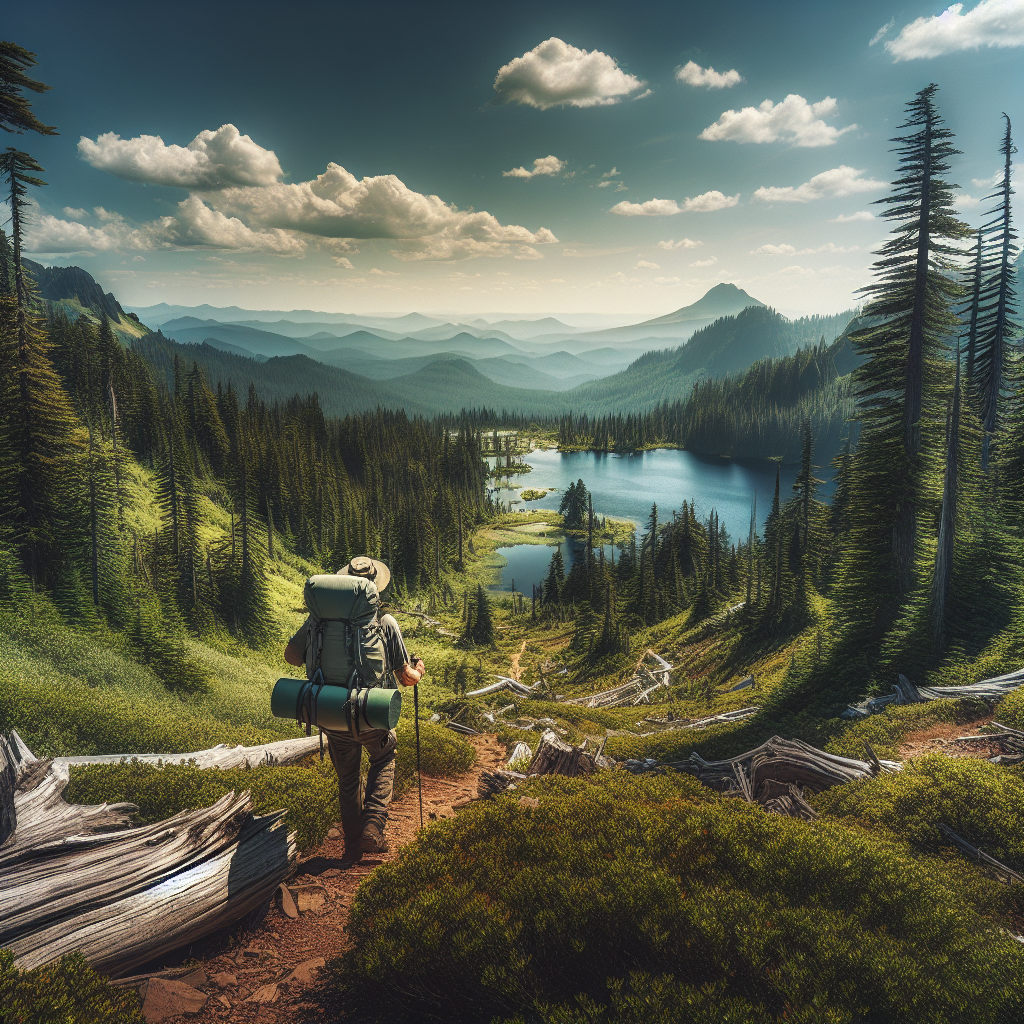Title: An Authentic Guide to Backpacking the Oregon Section of the Pacific Crest Trail
Introduction Welcome to Oregon, a backpacker’s dream with its majestic mountains, sparkling rivers, and dense, lush forests. The Oregon Section of the Pacific Crest Trail (PCT) is perhaps one of the most picturesque landscapes to witness in this beautiful state. This guide aims to give a local’s perspective, with seasoned advice on how to make the most of a backpacking trip along Oregon’s PCT.
Preparing for the Trip A well-prepared backpacker is a happy backpacker, and when it comes to tackling the Oregon section of the PCT, preparation takes on a whole new level. Ensure to pack a reliable map or the Guthook App, which is a favorite among locals as it shows real-time water source updates and trail conditions. It’s also smart to bring along the Ten Essentials and follow Leave No Trace principles for a responsible journey. It’s worth noting that in Oregon, the weather can change rapidly, so pack for a range of conditions.

The Trail Starting from the California border, the PCT in Oregon extends for about 455 miles of pure hiking pleasure through a diverse landscape. Just south of Fish Lake, the trail winds through Sky Lakes Wilderness, a paradise beloved by Oregonians for the excellent fishing in its glacier-carved lakes.
Further north, the trail passes by the world-renowned Crater Lake. It’s worth the side trip to see its deep blue waters and the awe-inspiring Phantom Ship. But keep in mind to avoid the Rim Drive on summer weekends – it can get quite crowded with tourists!
Then, the trail wanders along Oregon’s volcanic Cascade Range. The stretch around Mount Thielsen offers a breathtaking view of the mountain’s stark, pointed peak. Be alert for sudden afternoon thunderstorms common in this area.
Seasons and Conditions Oregon’s volatile weather makes timing essential. Late July through September usually offers the most stable weather. Even so, prepare for those notorious, quick-changing Oregon conditions. Expect snow on high ground until July and remember that wildfire season in August may cause trail closures. Knowledgeable Oregon civilians are watchful of fire news and always have a back-up plan.
Food and Supplies Oregon may be a wilderness haven, but it’s also famous for its love of good food and coffee. You will find superb local businesses along the trail that add delight to your journey. Grab some hearty and healthy supplies from Ashland Food Co-op before starting your journey. While on trail, save some appetite for a pie from Beckie’s Café near Union Creek, it will be the best decision you made that day.
The Harmony Lake Trail angel in Sisters is another must-stop, with its offer of free snacks and resupply boxes. Remember to tread lightly and respect this generous tradition.
Safety and Wildlife This would not be an Oregon guide without mentioning safety and wildlife. Locals will tell you — respect nature, and it will respect you. Black bears, mountain lions, and rattlesnakes are part of the Oregon wilderness, but encounters are rare and usually harmless if you maintain distance and don’t feed them. In the meantime, mosquitoes particularly adore the Mount Jefferson Wilderness, so carry a bug spray in summer months.
Conclusion The Oregon segment of the Pacific Crest Trail is more than just a route through the diverse landscape—it’s an intimate and unforgettable exploration of Oregon’s beauty. As you march through its wilderness, remember that you’re a guest in nature, and every step you take is a note in the symphony of this great state’s story. Enjoy the journey, make great friends, respect the trail, and know that as you walk under the Oregon sky, each step reveals another jewel of this beloved land. Happy trails!
